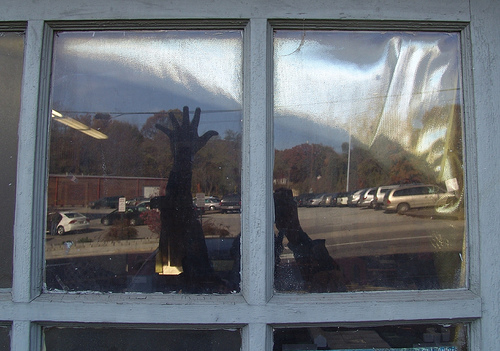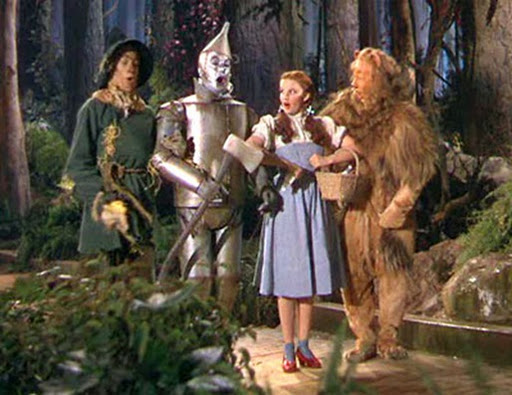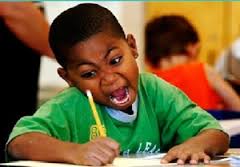Writers, What Are You Missing?
Here’s the truth about missing things. Sometimes we have no clue what we’re missing. Something’s just not right. We feel a bit perplexed because we know something’s off but we have no idea how to identify what it is.
I’m talking about our writing, in particular. Though, we might feel this same way in other endeavors—building a piece of furniture, painting a picture, composing a song, decorating our living room.
Have you ever had that niggling feeling that you just haven’t nailed it?
This is a very common feeling among writers. There’s nothing less helpful that giving a friend a chapter you’ve written and he tells you it’s pretty good. But you can tell by the tone of his voice (or email) or the look on his face that he wasn’t all that moved by what he read.
And it only confirms your sneaky suspicion—you already knew, in your soul, that the writing wasn’t spot-on.
But, problem is, you don’t know how the heck to fix it. If you ask your friend for specifics, he may be able to give you some general ideas—as might a critique group (and they can be dangerous at times, so beware! Nothing worse than wrong advice to steer you wrong.)—such as “I didn’t really care for the characters” or “it could’ve been a bit more interesting.”
Bleh.
When you just know something is missing, something’s just not working, in that scene or section you are writing, you just want to drop your head onto your keyboard and take a nap.
We Need Clear Direction
Lack of clear direction—a detailed blueprint to guide the way—is the biggest reason writers don’t finish their stories. When you flounder and don’t really know where you are going with your story, you suffer paralysis.
You read what you last wrote, and you feel like you missed the boat. But how can you know what you are missing unless someone tells you?
As you know, I’m a BIG proponent of plotting, structure, and using lots of charts and worksheets to hammer out all those difficult components of story structure.
See, I have so many ideas clogging my brain, it’s so hard to sort them out in an orderly fashion and bring order to chaos.
I picture this as dumping a shoe box brimming with nuts, bolts, odd bits of metal, and weird unidentifiable gizmos onto a table and then trying to come up with a workable, practical, and cool-looking machine that will serve a very specific purpose—like make me a cup of coffee when I wake up and deliver it to me in bed.
So, I’m the gal that really needs that big folded paper diagram to show me which part goes where. I really like things to work, and I HATE wasting time and getting frustrated.
Structure Does Not Equate to “Formula”
Using time-tested structure doesn’t mean you are being formulaic. Yes, if you need to build that robotic coffeemaker, you probably have to follow every single step exactly as stated.
But with a novel, you have a lot of wiggle room! Lots! But you still need to understand that 1) novels really do have a general structure and 2) structure is going to vary a bit by genre (and you need to nail that genre, seriously!).
So all these books and charts and worksheets you are using (I hope!) are good for you!
I have a lot of great free downloadable handouts on my blog’s resource page, in addition to a bunch of links to some great guest posts I’ve written for other top blogs. So take advantage of all this useful content!
Do you still feel as if you are missing something? You still aren’t sure you have “arrived”?
What I mean by that is you should get to a point in your journey when you KNOW you have all the tools in the toolbox and you can write a terrific novel every time.
This isn’t some nebulous kind of awareness I’m talking about. This is like acing the test and seeing that A+ and the gold star stuck to the page in the upper right corner. And the teacher’s scrawl saying, “Terrific job!!!”
I wrote all my writing craft books for you. So you won’t be searching your pockets looking for whatever you’re missing. Use the books and the checklists and the charts and the worksheets. Check to see if you’re missing anything.
 And of course, you can hire me to check your outlines and charts and chapters and point out what I’m noticing you’re missing.
And of course, you can hire me to check your outlines and charts and chapters and point out what I’m noticing you’re missing.
And, what the heck, because I KNOW my online video course (hours of great slides and explanation) is going to help you in a big way, I’ve created a coupon for you to give you a big discount. You can take this course for ONLY $49! by clicking on THIS LINK.
You can write great novels! You just have to be willing to do the work. How much do you want it?
Don’t drop your head on your keyboard. Get inspired and jazzed by having a clear blueprint!
Tell me: what are you struggling with most? What one topic would you like me to put in a book for you? Share your comment!












Well, your first paragraph pretty much nails it for me.
“Here’s the truth about missing things. Sometimes we have no clue what we’re missing. Something’s just not right. We feel a bit perplexed because we know something’s off but we have no idea how to identify what it is.”
When your manuscript has a more complex structure, such as a story within a story, it doesn’t always seem to work with the typical structure of most novels. I feel I am close…but, yes, something is still missing. I feel like my manuscript is bigger than I am-like I’m trying to guide a Macy’s Parade balloon down the streets of NY with a single piece of curly ribbon.